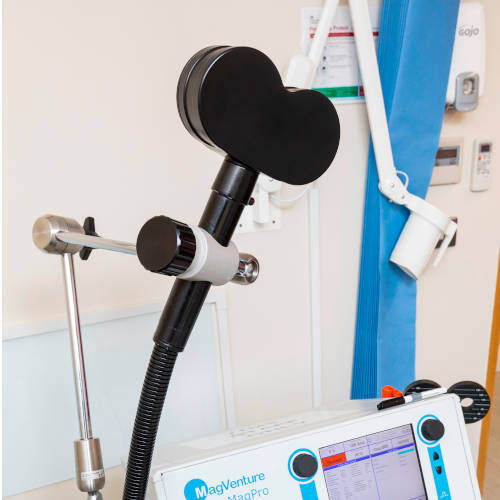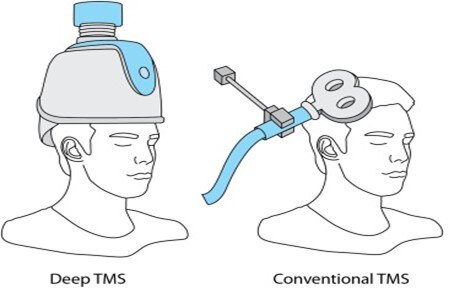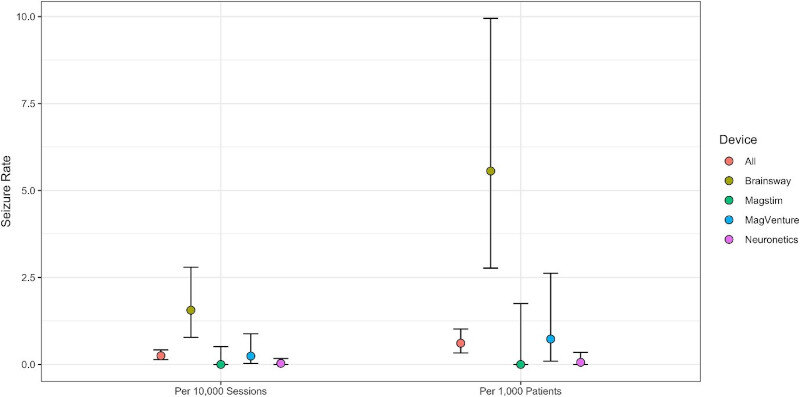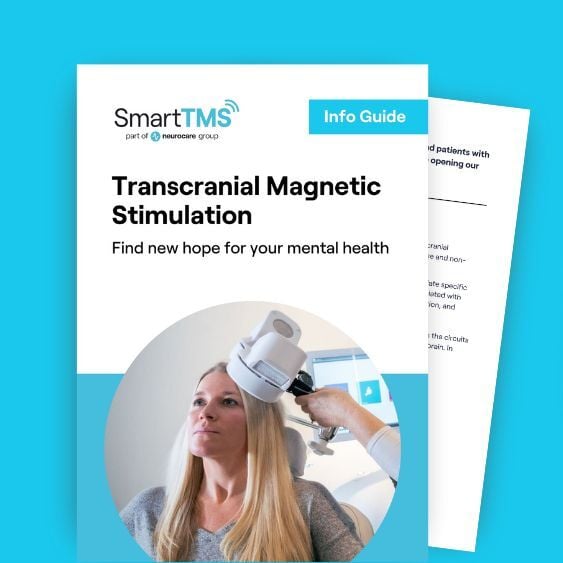TMS Coils: Safety and Seizures
July 4, 2023 - Smart TMS

TMS: Safe and Effective
There is no doubt Transcranial Magnetic Stimulation (TMS) has been proven to be an effective, safe solution for treatment-resistant disorders. Like all treatments, however, we are often given a rundown of all the potential risks and side effects.
Fortunately, the risks associated with TMS treatment remain small. As a practitioner, I take the time to highlight and reassure my patients about one rare side effect: the risk of a seizure.
Seizures are rare in TMS, but they are caused by direct stimulation of the motor cortex. Depending on the patient’s cranial structure, or how close neighbouring treatment points to the motor cortex, can increase the risk induce a tonic-clinic like seizure. Some patients are more predisposed to the risk of seizure, and these are accounted for prior to treatment, with necessary safety measures put in place to further reduce that risk.
Nevertheless, TMS technology is rapidly changing and the variety of tools to administer brain stimulation are ever increasing. The range of “coils” used to deliver TMS can alter the depth and size of the brain region targeted. While in theory the same TMS principles are being applied, this can result in varying degrees of side effects, including seizure risk.
Here we run into a problem; we have different coils manufacturers all claiming to be just as, or more, effective than the other. But to what extent is one TMS coil carry less risk than the other? The solution is simple – we compare the models and run an analysis.
Figure 8 and H Coil

Picture ref: Ekhtiari, H., Tavakoli, H., Addolorato, G., Baeken, C., Bonci, A., Campanella, S., … & Hanlon, C. A. (2019). Transcranial electrical and magnetic stimulation (tES and TMS) for addiction medicine: a consensus paper on the present state of the science and the road ahead. Neuroscience & Biobehavioral Reviews, 104, 118-140.
Many studies have investigated the effectiveness of coil manufacturers, but between-manufacturer comparisons are still limited. In 2021, a study by Taylor and colleagues analysed seizure occurrences across 4 large manufacturers of TMS coils: Brainsway, Magstim, MagVenture and Neuronetics. Brainsway uses the H-Coil, which is typically used to administer what is known as “deep TMS”. This in targeting a wider area of cortical motor regions, in comparison to the Figure 8 coil.
Some evidence shows that this method of stimulation yields a greater response to treatment. The H-coil is designed to stimulate a wider range of cortex at a higher amplitude and penetrate deeper into the brain. Desirable as this sounds, the H-Coil poses an issue in terms of seizure rates compared to other coil types. The study gathered data from 134 members, across 25,526 patients all the manufacturers. From 586,656 sessions, only 18 seizures were reported.
Coil Types with Higher Risk
Of course, this is reassuring to reinforce the safety of TMS, as many of the reported cases were in patients with pre-existing health factors that raised the risk of seizure. This will always be highlighted to the patient prior to treatment, giving them full clarity of the minor risks involved. The study’s aim, however, was to investigate which coil types were associated with higher seizure rates.

Picture ref: Taylor, J. J., Newberger, N. G., Stern, A. P., Phillips, A., Feifel, D., Betensky, R. A., & Press, D. Z. (2021). Seizure risk with repetitive TMS: Survey results from over a half-million treatment sessions. Brain Stimulation, 14(4), 965-973.
With the risk report capturing 94,857 patients over the last decade, 0.2 seizures in 1000 patients were recorded. Looking into the coil manufacturers, the risk of seizure was highest in Brainsway coils- that’s the deep TMS coil. The estimated risk of seizure per 1000 patients with MagVenture coils was 0.73. Strikingly, the Brainsway coil estimated a 5.56 increased risk. This was notably higher than any of the remaining three manufacturers cited in the study, as highlighted in the graph above.
The H Coil
So, does this mean that the H-Coil is dangerous? No – but the H-Coils efficacy for treating a wider area at a higher frequency shoots itself in the metaphorical foot. The H-Coil, by design, are less focal than the Figure 8 coil and can consequently stimulate cortical motor regions near the prefrontal cortex (PFC). Therefore, while targeting the PFC, the surrounding areas may also be targeted when trying to treat depression. Potentially causing seizures to occur.
Summary
As undesirable as this all sounds, this study used data capped in 2018, and most of their seizures were reported between 2010-2013. TMS is gaining so much momentum and reaching more and more patients. Including data from 2018 onwards with a higher patient volume to date may pose the possibility that seizure risks could be on the decline.
TMS is becoming more widely accessible and safety implications are refined with experience. The take-home message from the study can be summarized as this; TMS remains a safe treatment for depression and many other conditions and much is being done to enhance it. As a TMS practitioner who uses the Figure 8 coil, I have the pleasure of being part of that journey. In my practice, I can be reassured that I can deliver a treatment that is both safer and effective.
Author, Paul,
Smart TMS Edibnburgh Practitioner
Ref:










